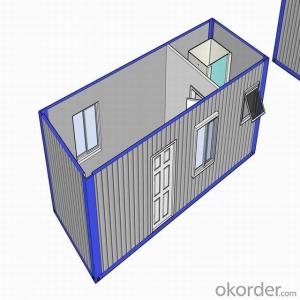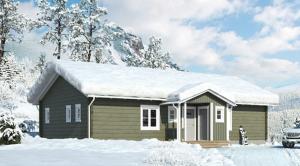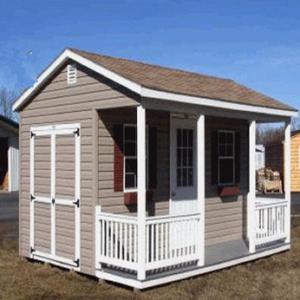Galvanzied Steel Storage Prefabricated House Made in China
- Loading Port:
- Tianjin
- Payment Terms:
- TT OR LC
- Min Order Qty:
- 6 m²
- Supply Capability:
- 50000 m²/month
OKorder Service Pledge
OKorder Financial Service
You Might Also Like
Galvanzied Steel Storage Prefabricated House Made in China
Description:
1. The house is made of light steel structure and rustproof color steel sandwich panel as wall and roof.
2. The size and layout can be designed as per customers' requirements for its flexible dimension
3. The house has waterproof structure and heating insulation material, such as EPS, Rock wool or PU Panels interlock easily to form a complete thermally efficient shell.
4. Two kinds of flooring system are available, one is steel chassis floor, the other is concrete foundation.
5. One 40’HQ container can load about 160m2 considering 75mm thickness panel for roof and wall;
6. Six skilled workers can finish 42m2 in 8 hours ;
7. The house can resist heavy wind load of 0.5KN/m2 and 7-8 degree seismic intensity.
8. DimensionAs per customer design or layoutLoading160 to 200m2 per 40’HQ container
Applications:
Family house for low income people, Temporary homes for disaster area, Holiday and vocation house…Remote site constructions camping, Warehouse , Work shop…Company office, Dining halls, Dormitories, Hospitals, Saloons, Entertainment centers…
FAQ:
1.How about the installation? For example, the time and cost?
To install 200sqm house needs only 45 days by 6 professional workers. The salary of enginner is USD150/day, and for workers, it's 100/day.
2.How long is the life span of the house?
Around 50 years
3. And what about the loading quantity?
One 40'container can load 140sqm of house.
Images:
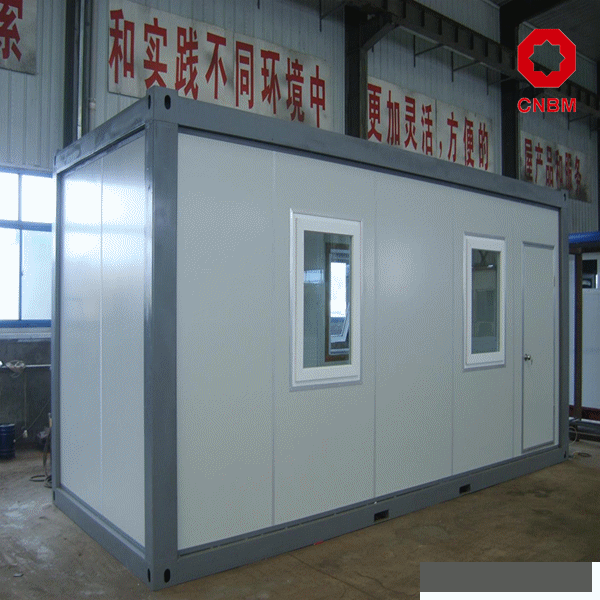
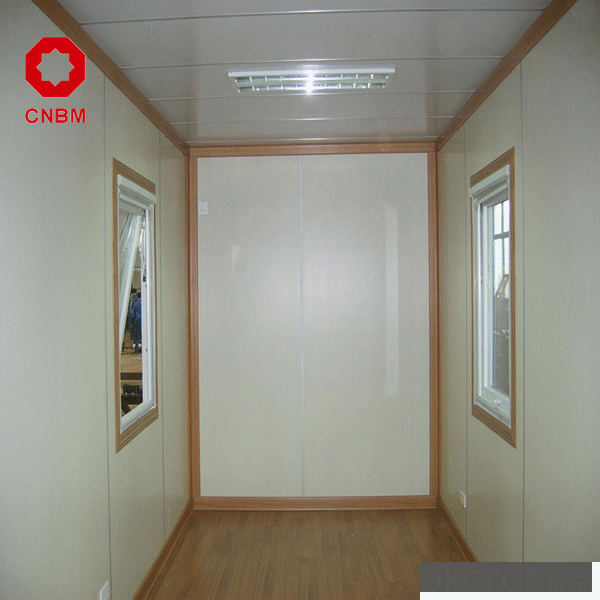
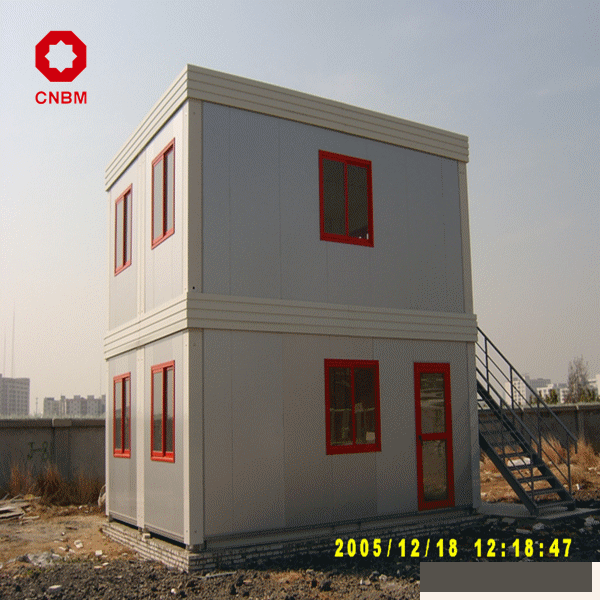
- Q:Can container houses be designed to have a home gym or fitness area?
- Yes, container houses can certainly be designed to include a home gym or fitness area. With proper planning and customization, the interior layout of a container house can be optimized to accommodate fitness equipment, such as exercise machines, weights, or yoga mats. Additionally, the design can incorporate features like large windows for natural light, proper ventilation, and soundproofing to create an ideal space for workouts.
- Q:Are container houses suitable for Airbnb or vacation rental investments?
- Container houses can be a great option for Airbnb or vacation rental investments. These innovative structures offer a unique and trendy accommodation experience, which can attract a wide range of guests. With their modern and sleek designs, container houses have become increasingly popular among travelers seeking a different kind of stay. Container houses offer several advantages that make them suitable for Airbnb or vacation rental investments. Firstly, they are cost-effective, as containers can be purchased at a lower price compared to traditional homes. This allows investors to save on initial investment costs and potentially earn higher returns on their investment. Secondly, container houses are highly customizable. They can be modified and designed according to the preferences and needs of the target market. This flexibility allows owners to create unique and stylish living spaces, which can be a major selling point for potential guests. Furthermore, container houses are eco-friendly, as they repurpose unused shipping containers and reduce waste. This can be appealing to environmentally conscious travelers who prioritize sustainable accommodation options. In terms of practicality, container houses are relatively easy to maintain. They require less upkeep compared to traditional homes, as they are made of durable materials that are resistant to weather conditions. This can save owners time and money on maintenance and repairs. However, it is important to note that container houses may not be suitable for every location or market. Some areas may have strict regulations or zoning restrictions on container houses, limiting their potential as vacation rentals. It is crucial to research and understand the local regulations before investing in container houses for Airbnb or vacation rental purposes. In conclusion, container houses can be a suitable investment for Airbnb or vacation rentals. Their unique design, cost-effectiveness, customizability, eco-friendliness, and low maintenance requirements make them an attractive option for both owners and guests. However, it is essential to consider local regulations and market demand before making any investment decisions.
- Q:Are container houses suitable for hospitality or hotel accommodations?
- Yes, container houses can be suitable for hospitality or hotel accommodations. They offer a unique and modern aesthetic while also being cost-effective and eco-friendly. Container houses can be easily customized and expanded, allowing for flexibility in design and layout. Additionally, their modular nature makes them easy to transport and install in various locations. With proper insulation and amenities, container houses can provide comfortable and stylish accommodations for guests.
- Q:100 square meters villa size how to calculate?
- in fact, easy to decorate the network Xiao Bian that the slope of the roof can be a good way to increase the effect
- Q:Can container houses be financed?
- Yes, container houses can be financed. There are various financing options available such as personal loans, mortgages, or construction loans that can be used to finance the purchase or construction of container houses. However, the availability and terms of financing may vary depending on factors such as the location, size, and condition of the container house, as well as the borrower's creditworthiness.
- Q:Can container houses be insulated?
- Certainly! Container houses can indeed be insulated. Insulation plays a vital role in the construction of container houses. Due to their metallic composition, shipping containers have a tendency to transfer heat and cold, resulting in an uncomfortable interior temperature. Nevertheless, incorporating insulation into the walls, roof, and floor of a container house can significantly enhance its thermal performance. Multiple insulation options are at one's disposal, ranging from foam and fiberglass to natural materials like straw bales. Moreover, insulation aids in reducing energy consumption for heating or cooling, thus rendering container houses more energy-efficient and economically advantageous in the long term.
- Q:Can container houses be designed with a wheelchair lift?
- Yes, container houses can be designed with a wheelchair lift. With careful planning and design, modifications can be made to accommodate individuals using wheelchairs, including the installation of a lift system to ensure accessibility throughout the container house.
- Q:Are container houses suitable for temporary housing?
- Yes, container houses are suitable for temporary housing. Container houses are an innovative and cost-effective solution for temporary housing needs. They are built using repurposed shipping containers, which are durable, portable, and readily available. Container houses offer several advantages for temporary housing. Firstly, they can be quickly and easily assembled, making them ideal for emergency situations or areas with urgent housing needs. The containers can be transported and set up on-site in a short time frame, allowing for swift accommodation of displaced individuals or communities. Additionally, container houses are customizable and can be designed to meet specific requirements. They can be equipped with basic amenities such as insulation, electricity, plumbing, and heating/cooling systems, ensuring a comfortable living environment. Furthermore, containers can be stacked or arranged in various configurations to create larger living spaces or accommodate multiple families. Another advantage of container houses is their affordability. Shipping containers are relatively inexpensive compared to traditional building materials, making them a cost-effective solution for temporary housing projects. Moreover, the use of repurposed containers is environmentally friendly, as it reduces waste and promotes recycling. Container houses also have the advantage of mobility. They can be easily relocated to different sites, allowing for flexibility in responding to changing needs or situations. This is particularly beneficial for temporary housing projects that require mobility, such as disaster relief efforts or construction site accommodations. In conclusion, container houses are highly suitable for temporary housing. Their durability, portability, customization options, affordability, and mobility make them an excellent choice for emergency housing, disaster relief, construction site accommodations, and other temporary housing needs.
- Q:Are container houses suitable for educational or training centers?
- Indeed, educational or training centers can find container houses to be an appropriate choice. The rising popularity of container houses as a sustainable and cost-effective building alternative stems from their affordability, versatility, and ease of construction. These qualities make them well-suited for educational or training centers, where limited budgets and short construction timelines are often a concern. One advantage of container houses is their adaptability to the specific needs of an educational or training center. They can be tailored to include essential facilities such as classrooms, offices, meeting rooms, laboratories, and more. Moreover, the modular nature of containers allows for easy expansion or reconfiguration as the center's requirements evolve over time. Furthermore, container houses can be equipped with necessary amenities like heating, cooling, electricity, and plumbing, ensuring a comfortable and functional learning environment. They can also be insulated to provide a suitable climate throughout the seasons. Additionally, container houses align with sustainability goals as they repurpose recycled shipping containers, aiding in the reduction of carbon footprint. This aspect can serve as a practical example for students or trainees, supporting the educational or training center's commitment to sustainability. To conclude, container houses are a practical and suitable option for educational or training centers. They offer cost-effective, customizable, and sustainable solutions, making them an appealing choice for institutions looking to establish or expand their facilities.
- Q:What is the cost of a container house?
- The cost of a container house can vary significantly depending on various factors such as the size, design, customization, location, and additional features. On average, a basic container house can cost anywhere between $20,000 to $50,000. However, more luxurious and larger container homes can range from $50,000 to $200,000 or even higher. It's important to consider all these factors when determining the cost of a container house.
1. Manufacturer Overview |
|
|---|---|
| Location | |
| Year Established | |
| Annual Output Value | |
| Main Markets | |
| Company Certifications | |
2. Manufacturer Certificates |
|
|---|---|
| a) Certification Name | |
| Range | |
| Reference | |
| Validity Period | |
3. Manufacturer Capability |
|
|---|---|
| a)Trade Capacity | |
| Nearest Port | |
| Export Percentage | |
| No.of Employees in Trade Department | |
| Language Spoken: | |
| b)Factory Information | |
| Factory Size: | |
| No. of Production Lines | |
| Contract Manufacturing | |
| Product Price Range | |
Send your message to us
Galvanzied Steel Storage Prefabricated House Made in China
- Loading Port:
- Tianjin
- Payment Terms:
- TT OR LC
- Min Order Qty:
- 6 m²
- Supply Capability:
- 50000 m²/month
OKorder Service Pledge
OKorder Financial Service
Similar products
New products
Hot products

